We may earn money or products from the companies mentioned in this post.
Are you planning a trip to the nation’s capital, Washington D.C.? In this post I will give a day by day itinerary of what we did, where we ate, and how we got there. For tips on how to travel to D.C. on a budget and save even more money, scroll to the bottom of this post.
If you live in the West, like us, you will need to fly to D.C.. In May 2019, I saw a mistake fare from SLC to Washington D.C. for $113 RT. I quickly forwarded the email to Matt and we booked right away. We had never been to D.C. before, and thought for around $100 each we just couldn’t pass it up! After booking, since it was a mistake fare (a mistake fare is when an airline accidentally puts the wrong price for a ticket listing on their website), we waited for a few weeks with baited breath hoping we didn’t receive a trip cancellation notice from American Airlines, but they honored the mistake and so we moved forward with the planning.
Fast forward to March 2020, and we are on the plane ready to go. Since we think it is always more fun when we can get another couple to come with us, we invited my “best-cousin” (my family’s slang for best friend/cousin), Caleb, and his boyfriend, Justin, to join us.
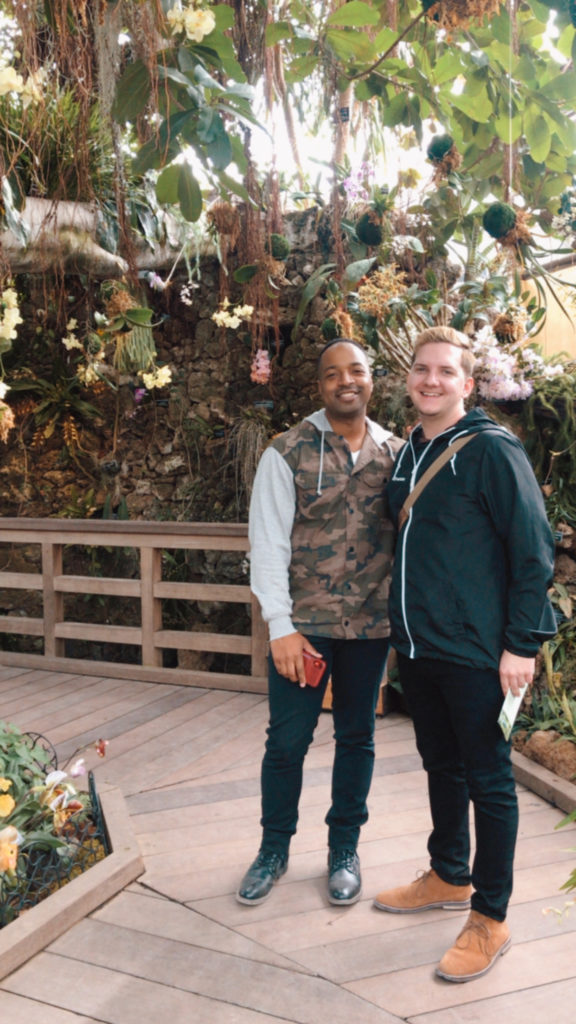
Day 1:
We arrived in the Ronald Reagan Washington National Airport (DCA) at around 3:00 p.m. This is the airport we would advise flying in and out of, as it is the closest of the three airports to central D.C., and is much smaller, so it is less busy and easier to navigate. We knew that taking public transportation in this city was the way to go, so we headed directly to the Metro Rail station within the airport. Coming from a place with relatively poor public transportation, we were new to the experience and really didn’t know where to start. We talked to the man working at the station and he would suggested that we buy a metro card and load $15 onto each card. After buying the card, there is no transaction fee to add money, so it turns out to be the smoothest way to go.
We took one train to our stop, then walked about 10 minutes to our Airbnb. (Below is a map of where we stayed in D.C.) We checked in, unpacked, and walked down the street to the nearest grocery store. In D.C. there are Trader Joe’s, Walgreen’s, and CVS’s on just about every corner. We went to Trader Joe’s and stocked up for the week on a few groceries such as cereal, oatmeal, milk, bread, and eggs. Typically, we plan two meals out each day, and one at home. We have found that we can save a lot of money on a trip by buying just a few simple groceries to supplement our eating out. This makes us prioritize which restaurants we want to go to the most, and it makes us feel less guilty about splurging on a more expensive place here and there.
We spent our first evening walking around Georgetown and we ate at &Pizza for dinner. We first thought that this was the only &Pizza, and didn’t find out until a couple days later that it is a chain, with at least a dozen locations scattered around D.C. The pizza is amazing though, and we ended up eating at &Pizza three times in our one week trip.
Day 2:
The next morning we took the bus to the National Air & Space Museum and arrived right as it opened at 10:00 a.m. The museums are typically less busy in the morning, and the Air & Space museum doesn’t require timed passes so we wanted to get there before the crowds. The museum is very large and has a lot to offer. There are exhibits on space, aircraft, way-finding, and a lot of fun, hands-on experiences for kids. We spent about 3 hours in the museum, including a 45 minutes IMAX production about Apollo 11. However, it did include some original footage of those astronauts that I don’t believe has been shown outside of the museum, so that was pretty cool to see.
After the museum, we were ready for lunch. To get to lunch, we decided to try out the public scooter rentals that are scattered all over the sidewalks. You simply download the app, put in payment information, then scan the scooter’s QR code to unlock it. Most of the scooter companies charge $1 to unlock the scooter, and then $0.15-$0.29 per minute thereafter. (Here are two websites that give detailed info about riding scooters in D.C.) We went to 2 Sisters Deli, which was just a couple blocks away and had the most amazing, fresh deli sandwiches. This was my favorite lunch of our whole trip!
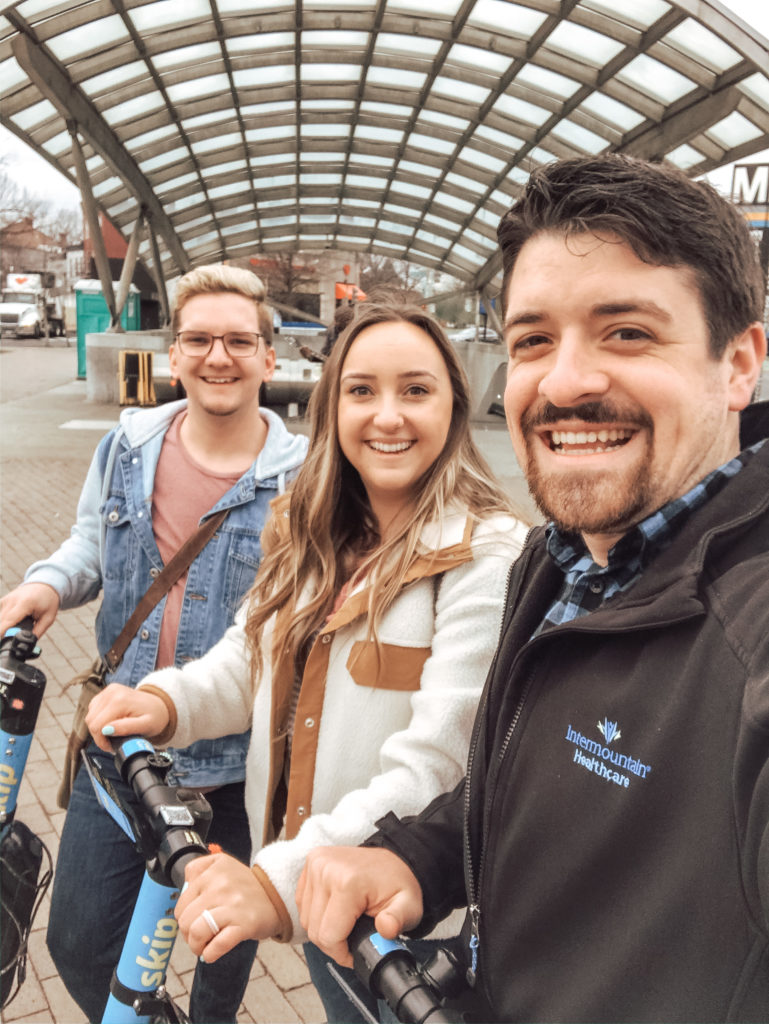
After lunch we spent about an hour moving through the exhibitions at the Hirshhorn Museum and Sculpture Garden. This museum is free and is a contemporary art museum. There are two stories of art galleries, and then an outdoor sculpture garden, which we couldn’t find until a couple days later when we were passing by the museum again. It is on the National Mall side, across Jefferson Dr. from the museum. We wish we could have spent time in the garden, but it was closed due to COVID-19.
Later that night took the bus to Chinatown for dinner and took a picture at Friendship Arch. We walked around for a bit before deciding to eat at Nando’s. A coworker recommended this restaurant to me and I am so glad that they did. It was delicious and the portions were big! They serve African-style chicken with a choice of different sauces and have yummy sides to go with it. Also, the staff was so friendly, which is always a sign to me that the restaurant treats their employees well, which is the type of establishment we like to endorse. It was a little more expensive at about $15-18 per meal, but definitely worth it!
Day 3:
It was about a 30 minute walk from our Airbnb to the Capitol Building. We reserved a tour of the Capitol Building a few weeks prior to our trip on our Congressman’s website. We requested a time for a White House tour in the same way, but unfortunately never heard back about a time for that one. Our tour started at 10:30 a.m. and was really impressive. It started at the congressman’s office in the Cannon Building, and we actually got to meet John Curtis, our district’s congressman, and talk with him. He told us that the Capitol Building and White House were shutting down tours at 5:00 p.m that night due to COVID-19. One of the congressman’s interns gave us the tour which consisted of walking through underground tunnels to get to the Capitol Building and lasted about an hour and a half. We learned a lot about the history of the Capitol Building, and due to COVID-19, it was so much less busy than it normally is.
We saw some of the amazing architecture, paintings, and historical rooms of the building, as well as the marble statues that each state donates of a historical figure from their state. After the official tour, our guide gave us entry passes into the House and Senate Galleries. We got into the House gallery relatively quickly, but unfortunately the House wasn’t in session, so we thought we would try the Senate gallery. Due to a group of 120 school kids in line before us, we ended up waiting in line to get into the Senate gallery for about an hour, which we didn’t think was worth it in the end. It was cool to see where these important meetings take place, but it wasn’t anything spectacular. In the end though, this was one of our favorite tours of our trip and I highly recommend getting a tour, whether through your district representative’s website, or the US Capitol Visitor Center website.
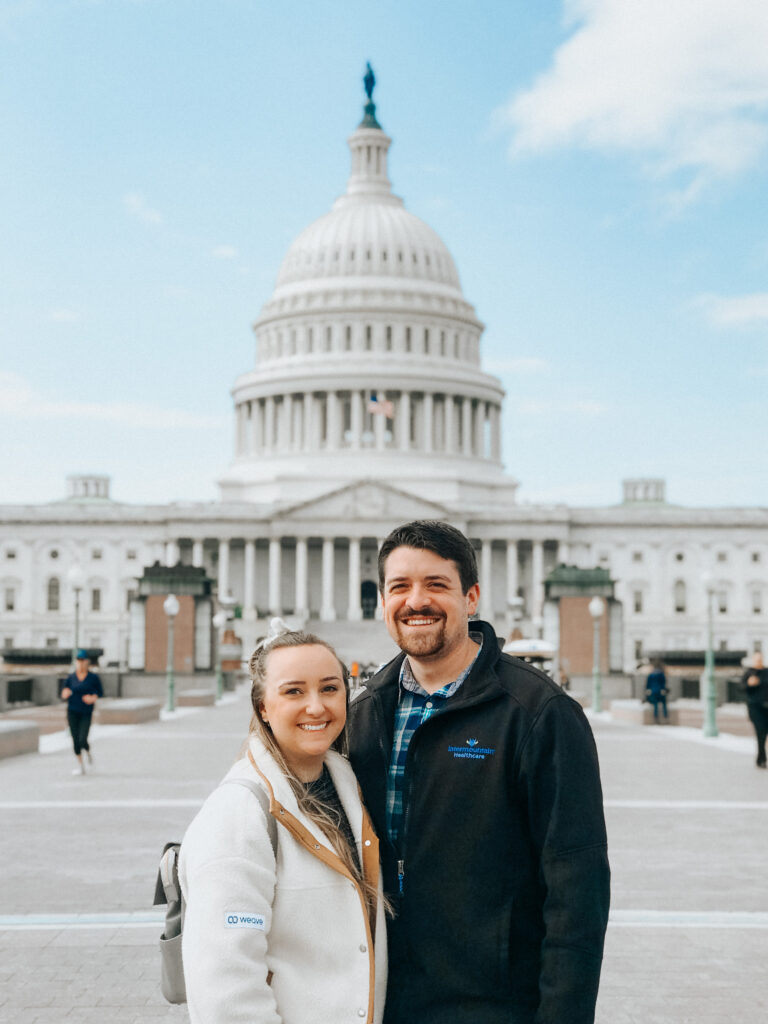
After the Capitol Building tour we walked West on the National Mall. About halfway across there is a street where the food trucks of D.C. congregate. We chose one that sounded good and had lunch in the grass overlooking the Washington Monument. Most of these food trucks seem to serve the same thing, which is Philly cheese steaks, fries, gyros, and/or tacos. We thought the lunch here wasn’t the best, but it was a fun experience. If we could go back, we would probably choose 2 Sister’s Deli again, rather than the food trucks, but we aren’t unhappy with the food we got. Here is a link to an article with the best food trucks in D.C. After lunch we took scooters back towards the Capitol Building and stopped in at the U.S. Botanic Gardens. These gardens were beautiful and much bigger on the inside than I was expecting.
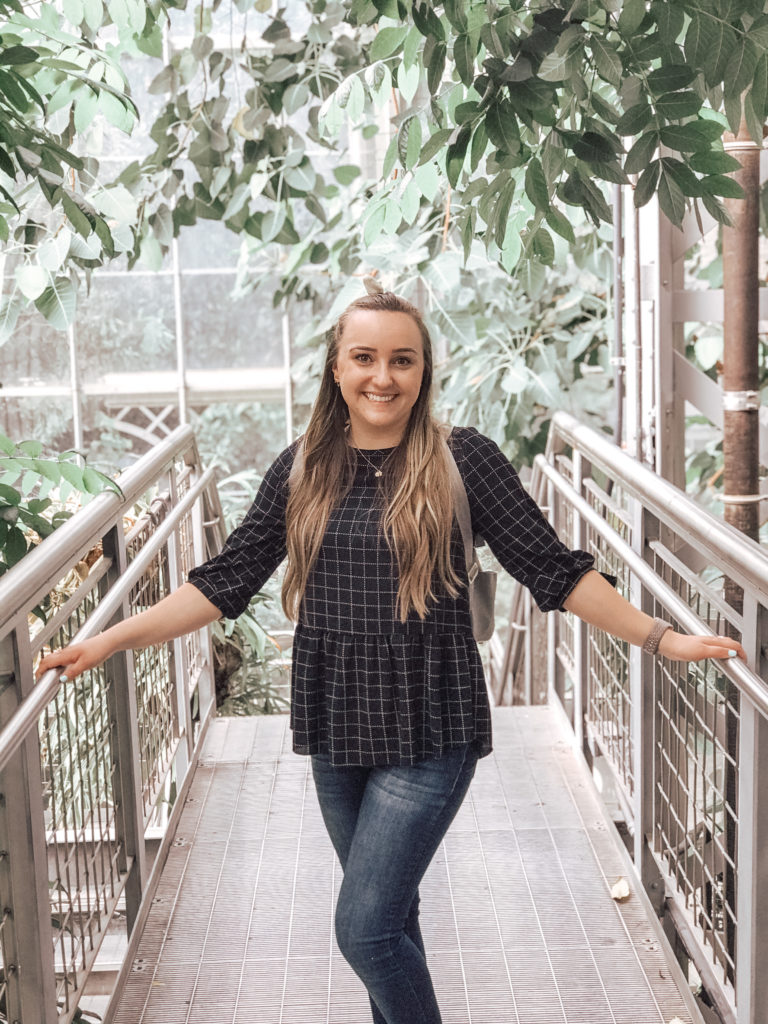
After the gardens, we took scooters back to our Airbnb to rest and spend the evening inside. Walking around D.C. all day definitely does take a toll on you. Caleb and Justin ended up going out for a late dinner at Tunnicliff’s Tavern. They reported that the food was good enough, but that it was very busy. It definitely had the hometown feel where the bartender knew people by name, and ran the whole bar and restaurant himself, other than the cook.
Day 4:
Using the Metro Rail, we traveled to the Washington Monument for a morning tour. To go inside and to the top of the monument you need a pass. We bought ours online prior to the trip. but they are also available the day of, both online and in person, although the quantity can be pretty limited during the busier seasons. It is a pretty quick tour and fun to see D.C. from a bird’s eye view. Inside there is some cool history about the monument itself, with inner stones donated from each of the fifty states. Fun fact: the Washington Monument, is the largest obelisk in the world, and the largest, entirely stone-built structure in the world, meaning there is nothing holding the stones together except gravity! We spent about an hour here including the tour and time on the grounds.
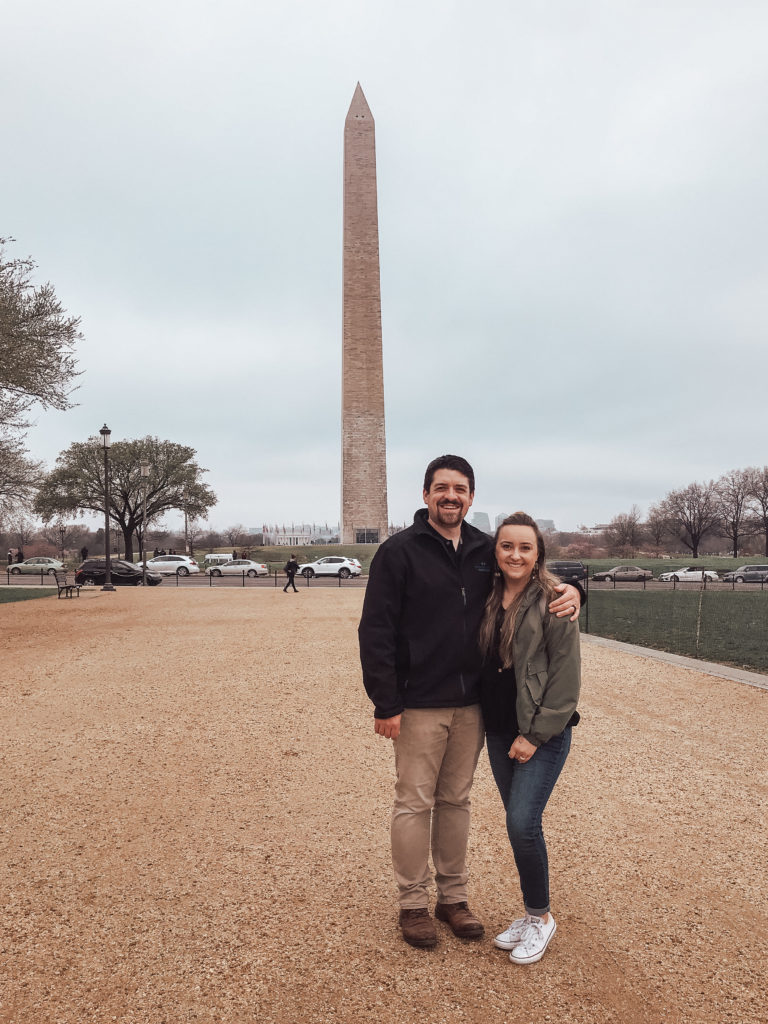
After the tour, we walked over to the Holocaust Museum. This museum is busy and timed passes are required for the permanent exhibition. We reserved passes beforehand online, and similar to the Washington Monument, they cost $1 per ticket, and are available in advance or the morning of. We felt that this museum was still crowded despite the timed passes, but it was a humbling and unforgettable experience. I definitely recommend making this museum a priority.
For lunch we scootered over to GCDC, a grilled cheese bar and ate delicious grilled cheese! After lunch we scootered to the National Archives Museum and saw the Declaration of Independence, the Bill of Rights, and the Constitution. You can get timed passes online beforehand if you don’t want to wait in a line when you get there. The museum is very large, and has a lot of different exhibits. After the National Archives we walked next door to the Museum of Natural History and walked through the many exhibits there. This museum does not require a pass to get in and is great for people who like to see taxidermy animal displays and dinosaur bones. After the museum we took a long scooter ride to Chinatown and ate at Taco Bamba. We ended the night eating delicious street tacos in a fun atmosphere before taking the bus home.
Day 5:
We walked a few blocks to the Eastern Market shopping area. Here, they have vendors in pop-up tents on the weekends, as well as several permanent stores along the street. While we didn’t buy anything, it was fun to interact with the store owners and vendors, and one store in particular had the funniest greeting cards we have ever seen. We spent a good half hour looking at them and laughing with each other.
We then took scooters to Union Station and walked around the beautiful building. Right inside the main entrance it is absolutely stunning. I recommend leaving Union Station after you’ve seen the main entrance. We ended up walking around the mall and food court inside Union Station and it was unfortunately very dirty. There were a lot of homeless people that hung around the food court and the Amtrak station on the lower level. We bought lunch here but headed outside the station to eat it. After the station we headed home for midday naps.
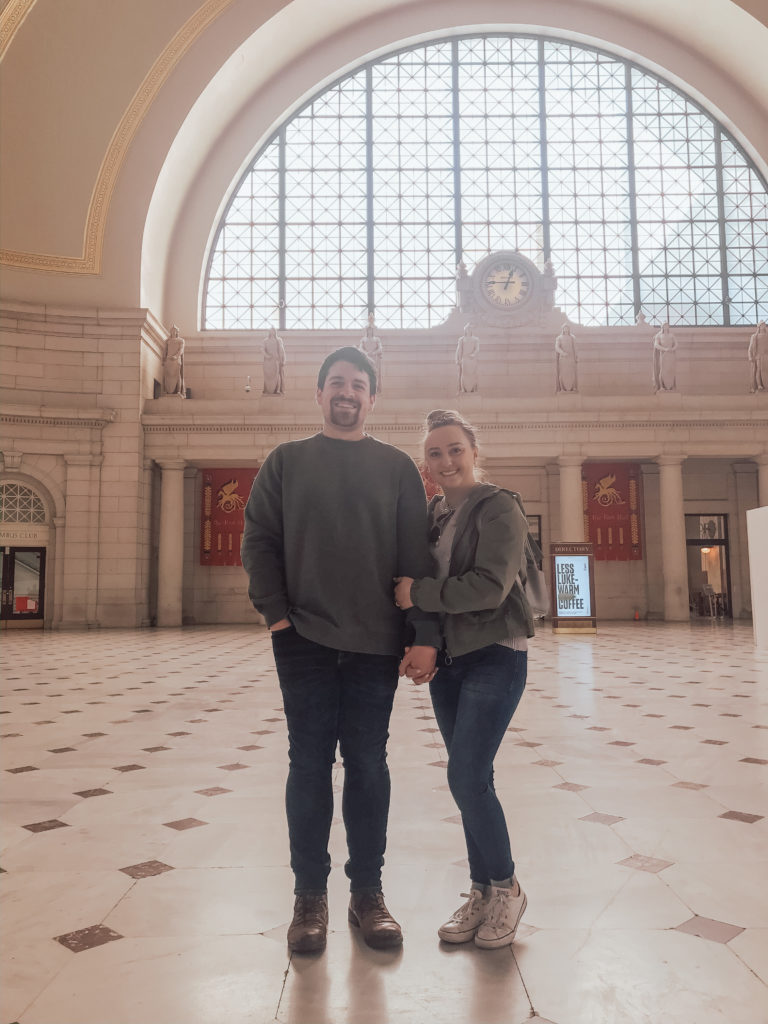
That evening we headed to U street which is a lively street with lots of restaurants, bars, live music, and more. It was alive with college students from the nearby Universities. We ate dinner at the iconic Ben’s Chili Bowl, which was fun to experience a historical place, but the food wasn’t anything amazing and was a little expensive. There was a lot of cool street art on the sides of the buildings though, so it would be worth it to come earlier in the evening to admire these before eating dinner.
Day 6:
Since all of the Smithsonian museums were closed due to COVID-19, we bought tickets to the International Spy Museum. This was an interactive museum that was at the top of Matt’s list. It was a little pricey at $25 for adults, $20 for students (with a valid ID), and $15 for kids. We had a fun time and Matt was fascinated with the stories and real-life spy gear that is on display.
We rode Uber Jump bikes, which work like the scooters, back to Eastern Market for brunch at Ted’s Bulletin and tried one of their Ted’s Tarts, which are homemade pop-tarts. For the afternoon we took a bus to the National Arboretum and walked around the beautiful grounds and saw the original columns from the Capitol Building. It was a little out of our way, but definitely worth the trip and great for pictures. There is a Bonzai garden as well as several other exhibits.
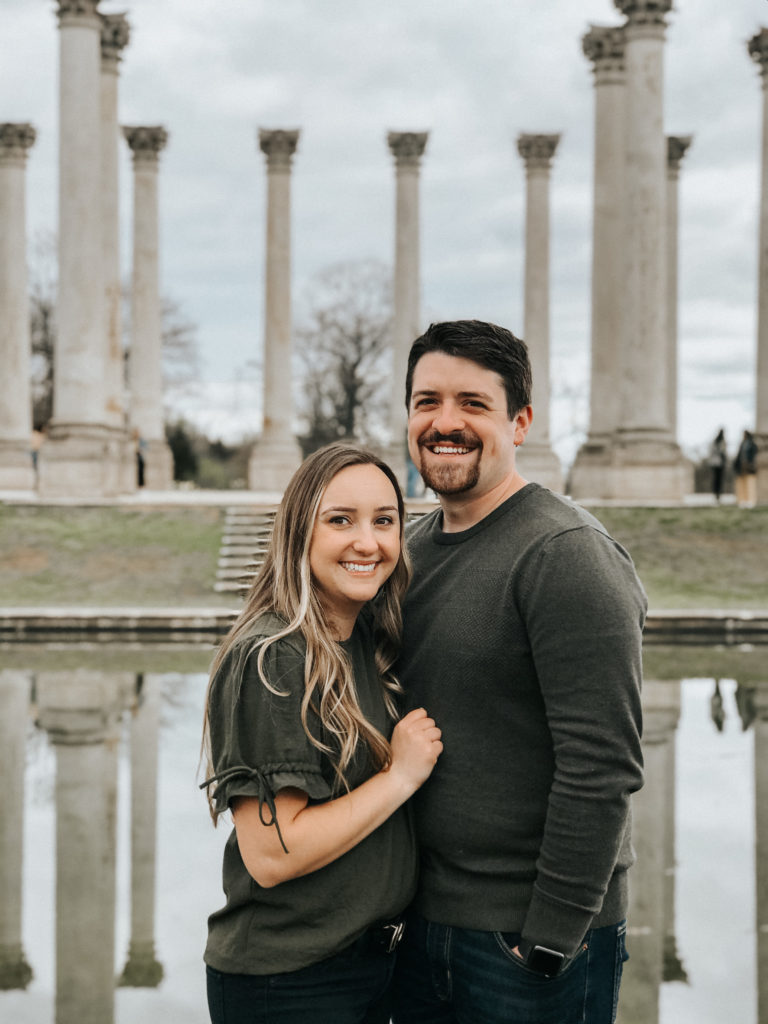
We rode back to Eastern Market by bus and later that evening we went to an amazing hole-in-the-wall Italian restaurant called Trattoria Albertos. Although it didn’t look it on the outside, this restaurant is a lot fancier than anything else we went to in D.C. and the service was the best service I have ever experienced. I ordered Spaghetti Carbonara for dinner and, I kid you not, it was the best Carbonara I have ever tasted! This was our most expensive meal of the trip, but also the best. We are so glad that we trusted Yelp and Google reviews and tried it out.
Day 7:
Since the museums were closed, we spent the morning and afternoon at home playing games and relaxing. In the evening we rented a Capital Bikeshare and biked our way around the National Monuments. We started at the Washington Monument, biked around the tidal basin at sunset, and finished up at the Lincoln Memorial and saw it lit up at night.
The Capital Bikeshares are similar to the scooters and Uber bikes, however, it is required that you dock them in designated ports around the city. There are ports all around though, especially near the National Mall and the monuments, so it was a great way to see them. They are probably the most economical way of transportation since you can get a 1-day unlimited pass for $8, or a 3-day pass for $15. They are free for the first 30-minutes of every ride with the pass, so as long as you dock them at least every 30-minutes, the pass fee is all you need to pay. Like I said, there are plenty of docks, so you just plan your rides to stop at those docks periodically, and spend 30 seconds docking it and then un-docking it again to reset the timer.
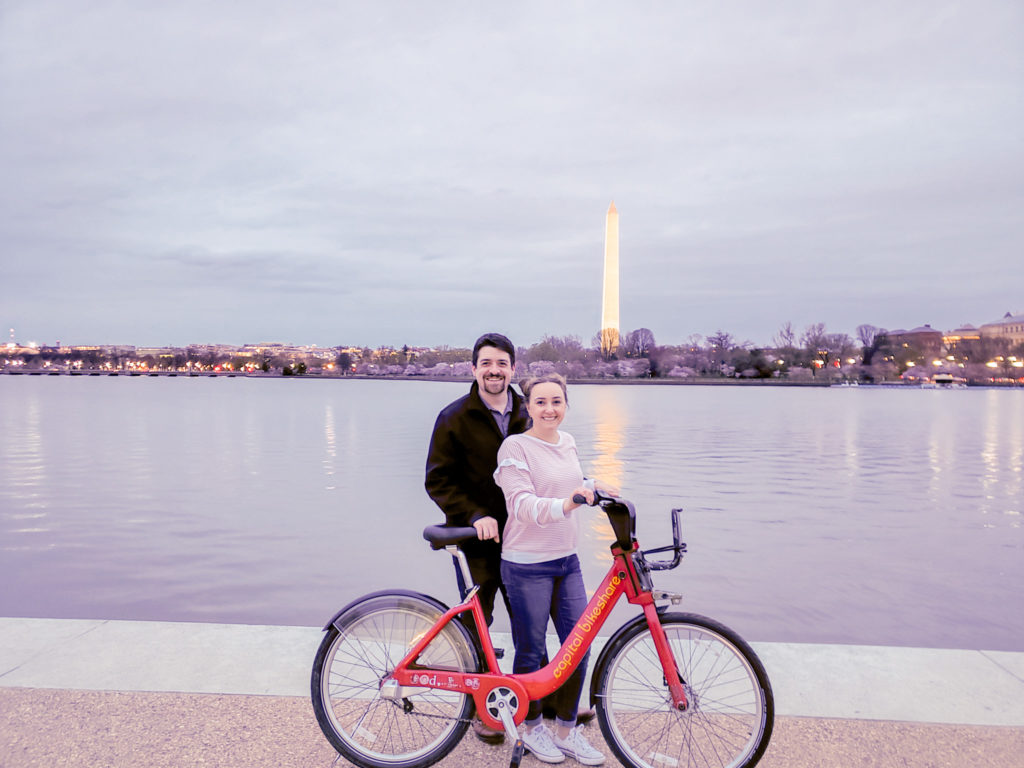
We were very lucky to have been able to go to D.C. when the Cherry Blossoms were blooming. These trees only bloom for about 2-3 weeks out of the year, and if you go to D.C. during the Cherry Blossom Festival, it is one of the busiest times of the year. Fortunately for us, COVID-19 became a pretty big deal so most of the tourists had already gone home and we basically had the place to ourselves. That night, since all of the restaurants were only doing takeout, we ordered &Pizza and took it home to eat for dinner.
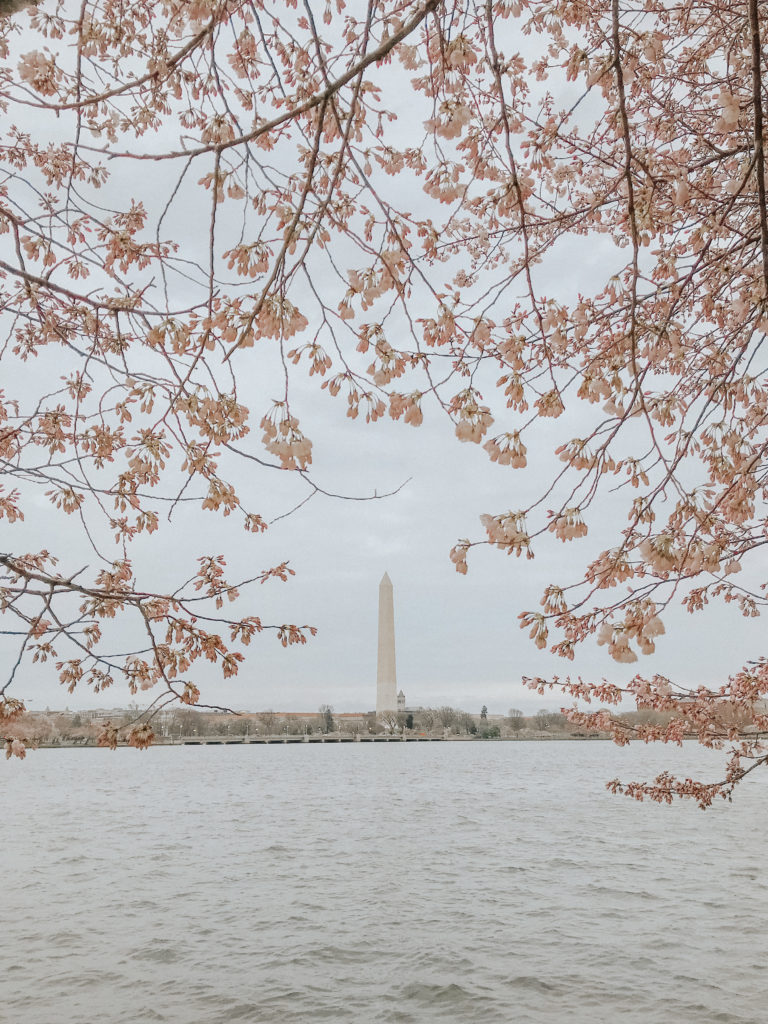
Day 8:
We woke up and ate breakfast and then packed. We checked out at 11:00 a.m. and headed to the airport by Metro. Our flight was out of the Dulles International Airport (IAD) which is in Virginia. It is about a 45 minute bus ride to get there and costs $7.50 per person. It was a nice airport, but if possible, the Ronald Reagan National Airport (DCA) that we flew into was much more convenient. Our flight didn’t leave until 7:00 p.m., but everything was closed and we had nowhere else to wait. It was an interesting experience being one of the only people in the airport and on the plane.
We made it home safe and just in time for COVID-19 to get even more serious. It was a trip of a lifetime, and while the social distancing and museum closures didn’t allow us to see as many things as we had originally planned, it was an amazing experience to be some of the only tourists left in D.C. We got to see the cherry blossoms, visit the memorials nearly by ourselves, and walk the sidewalks with hardly any cars on the road. It truly was unforgettable, and we can’t wait to return in the future.
Here is a record on what we spent on our trip:
Airbnb: $473.65
(what we paid for the Airbnb after splitting it with another couple)
Flights: $233.40
Food: $350.12
Transportation: $216.27
Museums: $69.60
Groceries: $46.33
Toiletries: $17.32
Grand Total: $1,406.89
Here are some tips from our trip:
- Transportation: We spent a lot on renting scooters which was fun, but not the cheapest option. Out of all the scooter companies, the Jump bikes and scooters, hosted by Uber and available through their normal app, were the most economical, and they didn’t charge the $1 unlocking fee that all of the others did. They just charge $0.25 per minute, and the bikes are semi-electric, so it makes riding them much easier. The cheapest option is the Capital Bikeshare, with the 3-day pass only costing $15, but the hassle of needing to dock them every 30 minutes to avoid excess fees definitely makes them a little more tedious to use, since you can’t just park them anywhere like the scooters and Jump bikes. The bus is also very cheap but is not very quick as it makes frequent stops, and it definitely has some shady people on it, particularly at night, so try to sit near the front.
- It may have been about the same cost for us to split a car rental with Caleb and Justin, but the streets were busy and there were a lot of parking restrictions. It saved us a lot of hassle to not rent a car, and saved us the cost of paid parking in some locations, as well as the hassle of possibly getting a parking ticket. Plus, we got to experience a lot more of the city while biking and scootering around.
- We also had the option of taking the Metro to a lot of places in the city, but the fare rates depend on how far you are traveling and usually start around $2.00+ per ride. If you have flexibility in your schedule, consider riding Metro during the reduced fare hours: after 9:30 a.m., before 3 p.m., and after 7 p.m. on weekdays.
- Food: We ate out a lot. You can definitely do this trip for less money but we knew that D.C. had many great food options and that made it hard to resist eating out.
- Museums: Most of the museums in D.C. are free and will not cost much, if anything, to get in. We spent the most money on the International Spy Museum which was $25 for each adult.
- Airbnb: If you are able to travel with family or another couple this is the best way to save money. Airbnb’s and hotels in D.C. aren’t the cheapest. But we were able to get one in a great location for a good price by splitting it with another couple. Also make sure to look in the description or comments about how safe the neighborhood is, and how close it is to metro stations, bus stops, and other amenities. We were very impressed with our neighborhood near Eastern Market. Be sure to read reviews on Airbnb about the location. Some neighborhoods aren’t as safe at night.
- Another tip: DO NOT reserve/look at Airbnb’s on the weekend (Sat-Sun) as they have “smart technology” that raises their rates by hundreds of dollars. I suggest booking one M-Th for the best rates, as well as far in advance.
- *We actually had a hiccup where the host for our original Airbnb canceled two weeks from our trip, and Airbnb support was phenomenal in helping us find another one that fit our needs. We were thrilled with the support team and we will not hesitate to use Airbnb again in the future.
Due to COVID-19, we didn’t get the chance to see and do everything on our list. Here are some more great options of things to experience in D.C.
- The National Museum of African American History and Culture: This museum is very busy and timed passes are required, either same-day in person, or beforehand online.
- The Library of Congress: This is the nation’s largest library.
- The Bureau of Engraving and Printing: Explore how U.S. currency is made.
- The Farmer’s Market at Dupont Circle: Open on Sundays, this farmers’ market offers local, seasonal produce, specialty foods & artisanal goods.
- We thought it would be cool to attend Mass at a cathedral in Washington D.C. Our plan was to attend St. Matthew’s Cathedral, but there are many others in the area as well.
- Attend a free, live concert at Millennium Stage.
- Old Town Alexandria: This city is rich in history, has a thriving boutique scene, and is easily walkable.
- National Harbor: Features 350 acres of waterfront resort space on the Potomac River.
- The National Zoo: This is a Smithsonian zoo and has free admission.
Comment below if you are planning on traveling to the Nation’s Capital and if this post was helpful and informational to you. We would love to hear about your experience and if you have any additional tips for other readers, please don’t hesitate to share! Don’t forget to subscribe to get updates about future posts.
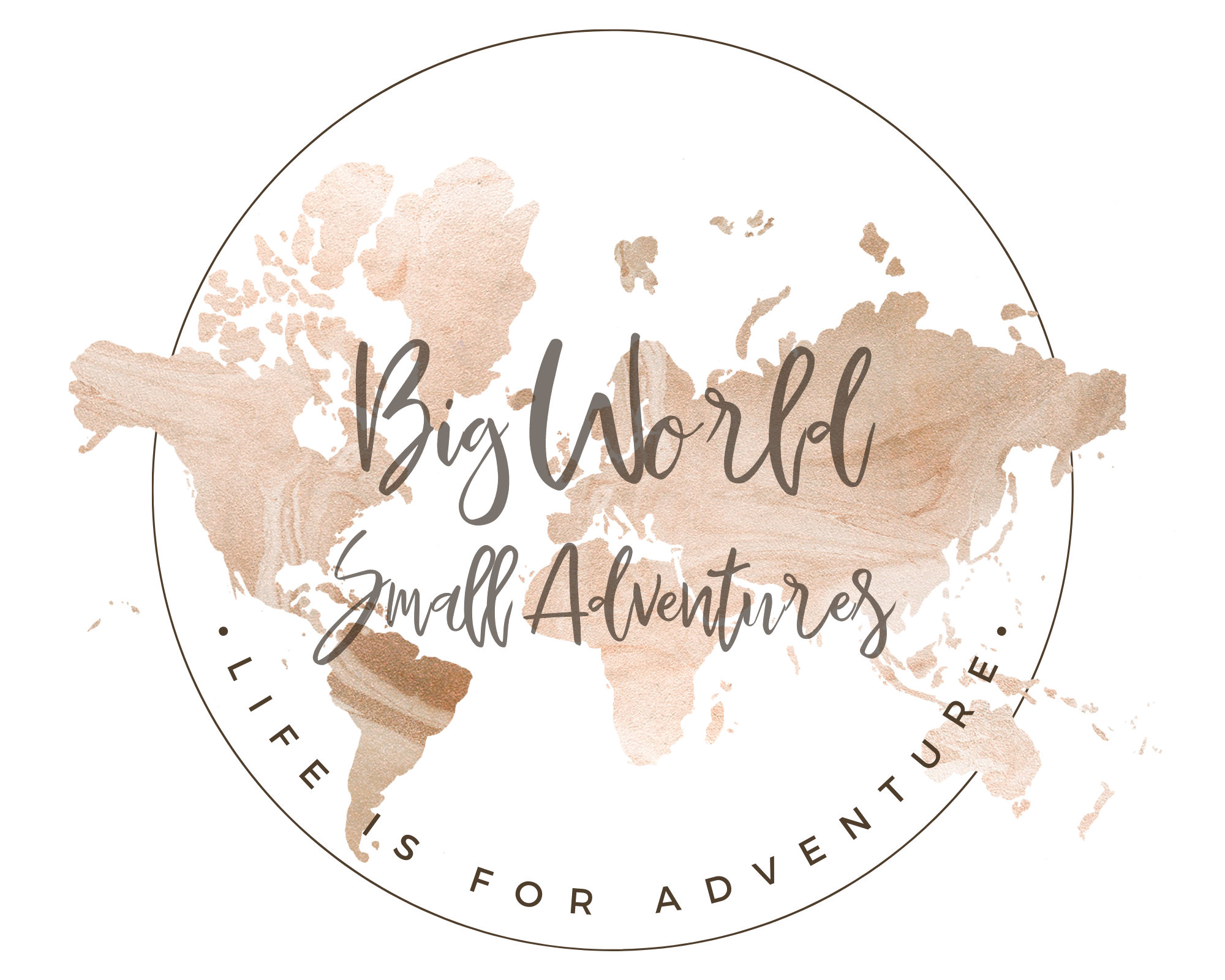



No Comments